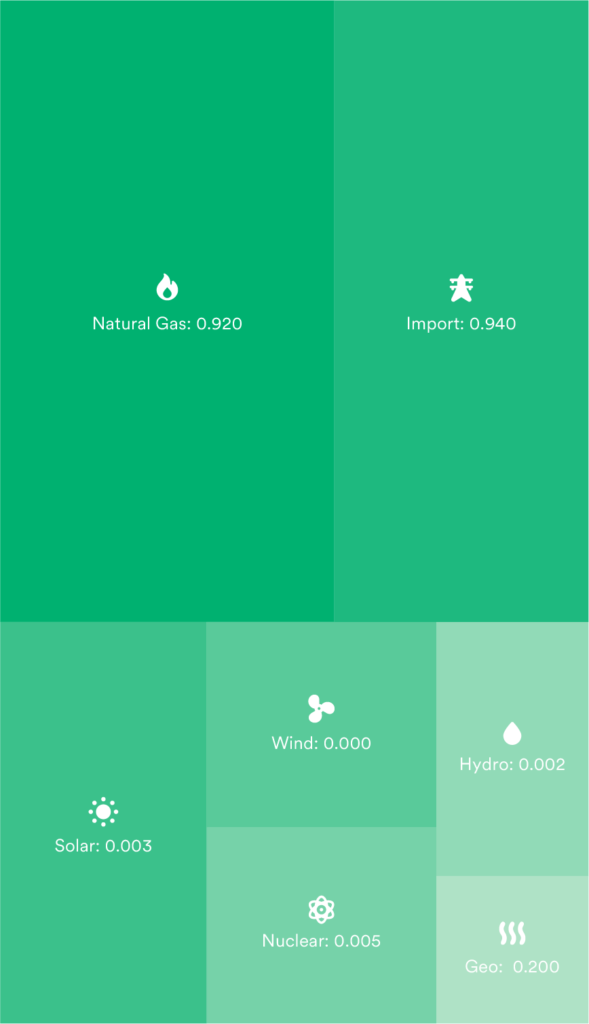
Average Regional Fuel Mix
The Carbon Intensity of each fuel ranges from 0.000 to 2.1, which equates to the pounds of carbon to produce one kWh of electricity. Graphic shows the average Carbon Intensity (CI) of each region (over a 12-month period).

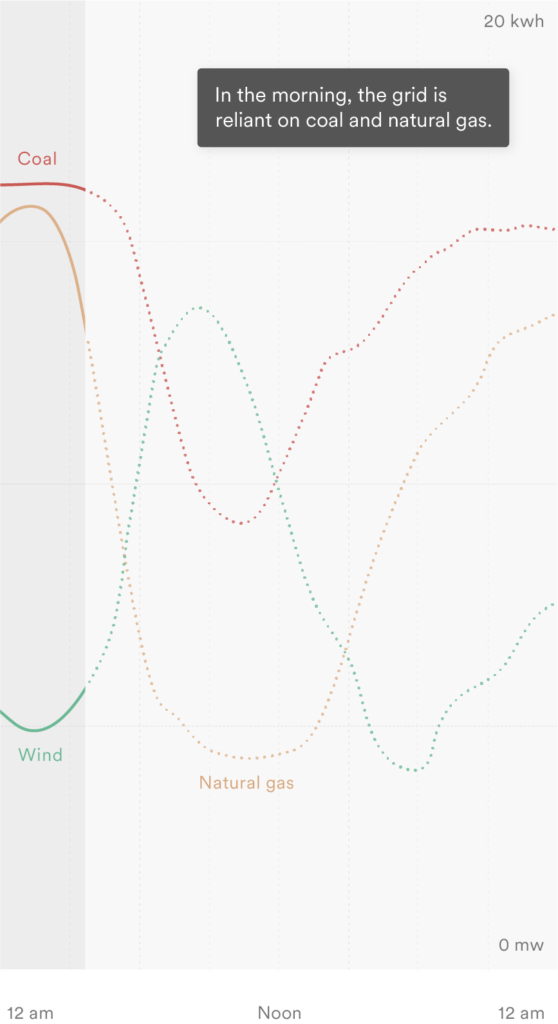
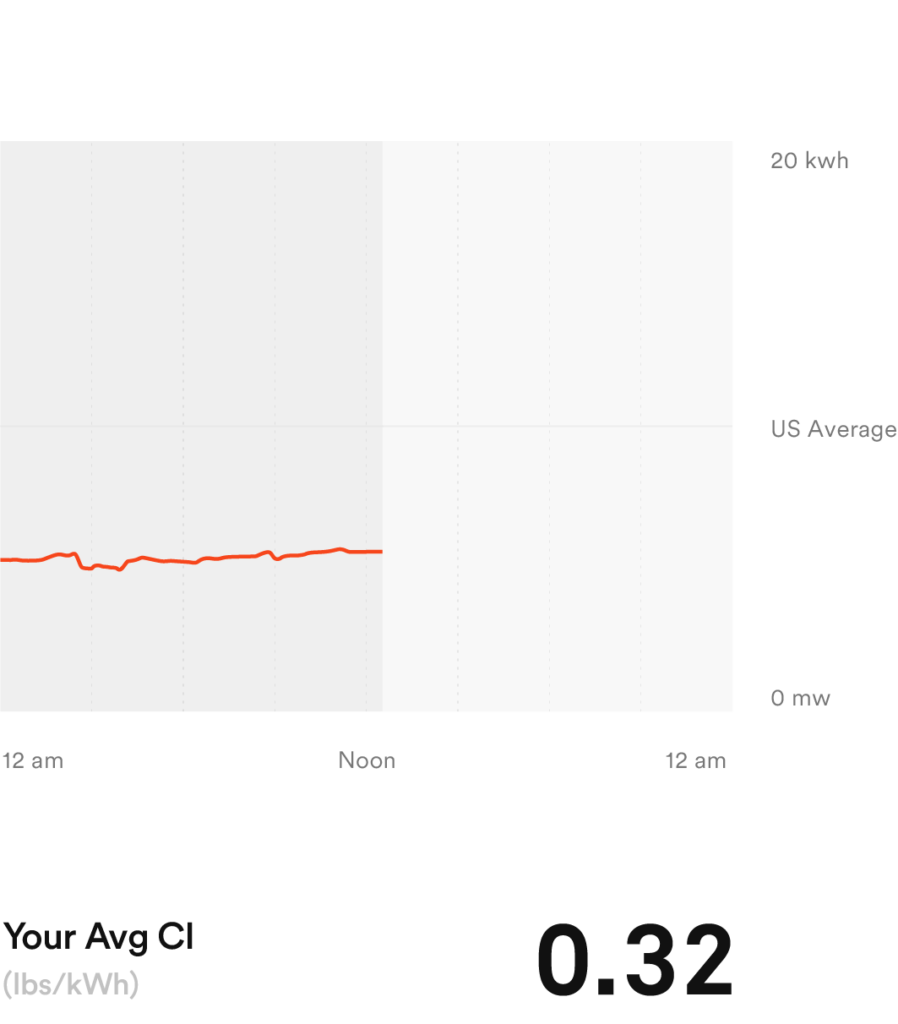
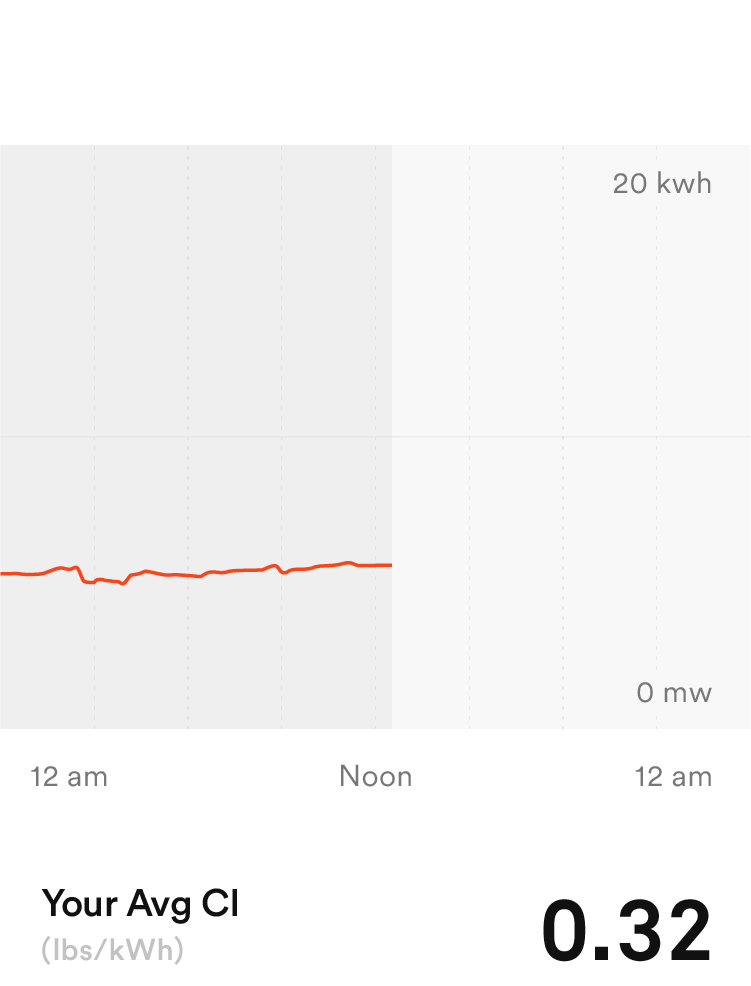
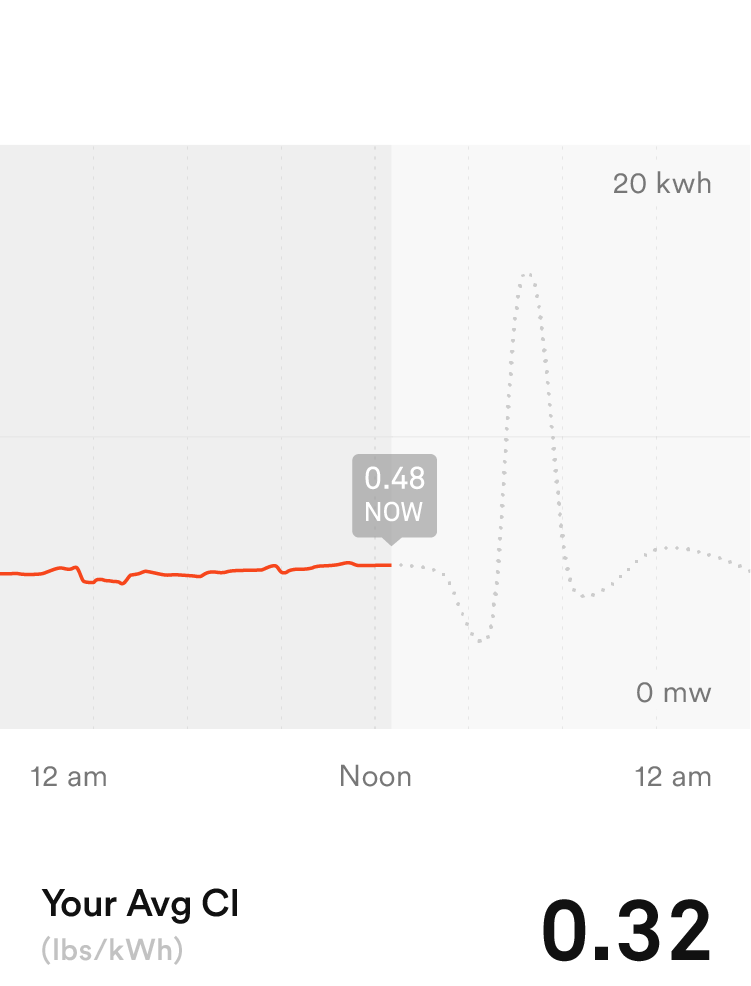
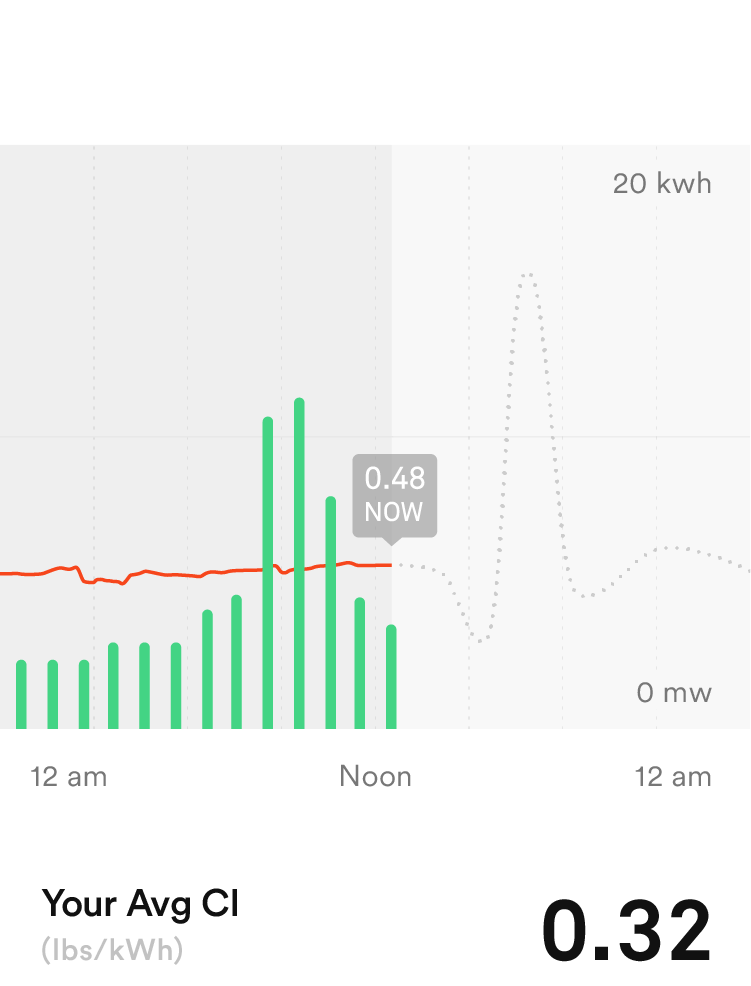

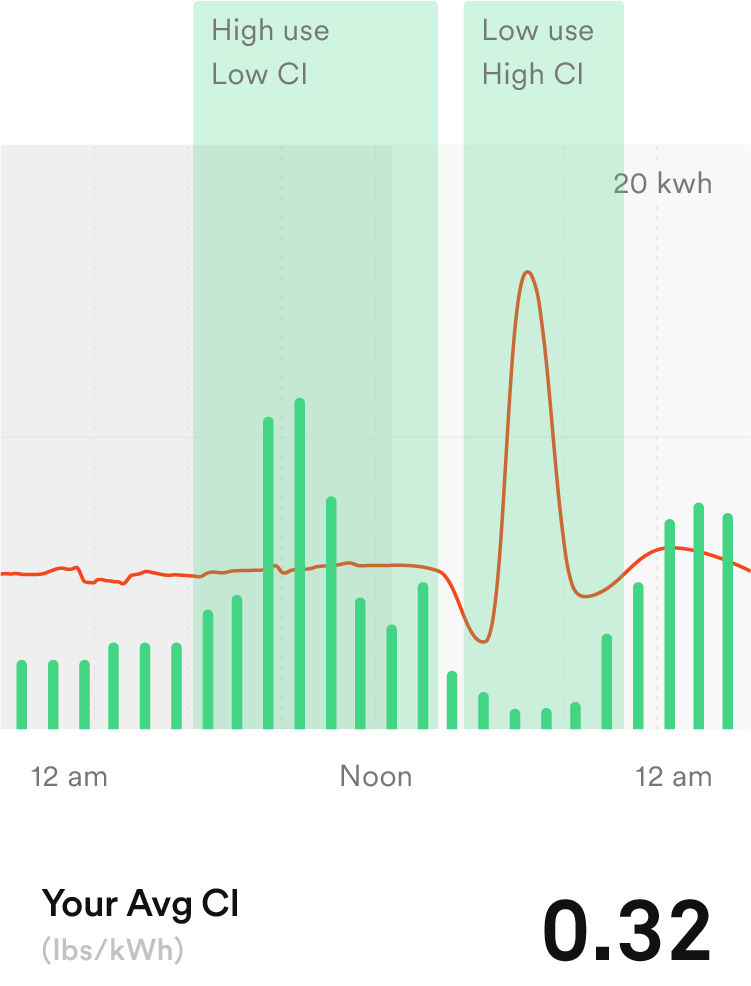
Carbon Intensity (CI) is the amount of carbon dioxide emitted to generate a specific unit of power. We measure CI in pounds per kWh, and the number ranges from close to 0 up to approximately 2 lbs/kWh. The average CI across the U.S. is 1, which is close to the CI score for natural gas. The higher the number, the higher the carbon emissions and related environmental impact.
We are using Singularity Energy’s Carbonara platform to provide carbon intensity data every 5 minutes.
Sense uses grid-emission data provided by regional balancing authorities across the U.S. Many of these regions report data in five-minute intervals, but others have a significant delay. Today, the Carbon Intensity feature is only available for regions that report data in nearly real-time. They include: Bonneville Power Administration (BPA), California Independent System Operator (CAISO), Southwest Power Pool (SPP), Midcontinent Independent System Operator (MISO), PJM, New York Independent System Operator (NYISO), and ISO New England (NEISO).
Community solar and clean energy programs use carbon offsets to reduce the subscriber’s overall carbon emissions, but electricity is still delivered by the utility provider. When you use a kWh of electricity, it’s being generated by the fuel sources that are powering the grid at that moment. Even if you participate in a clean energy or solar program, the Carbon Intensity feature can help you reduce your carbon impact by using energy when the least carbon intensive fuel sources are powering the regional electricity grid.
The carbon intensity feature does not account for your solar system production. It focuses on energy that’s being produced by the grid.
© 2024 · Sense
Please wait while you are redirected to the right page...